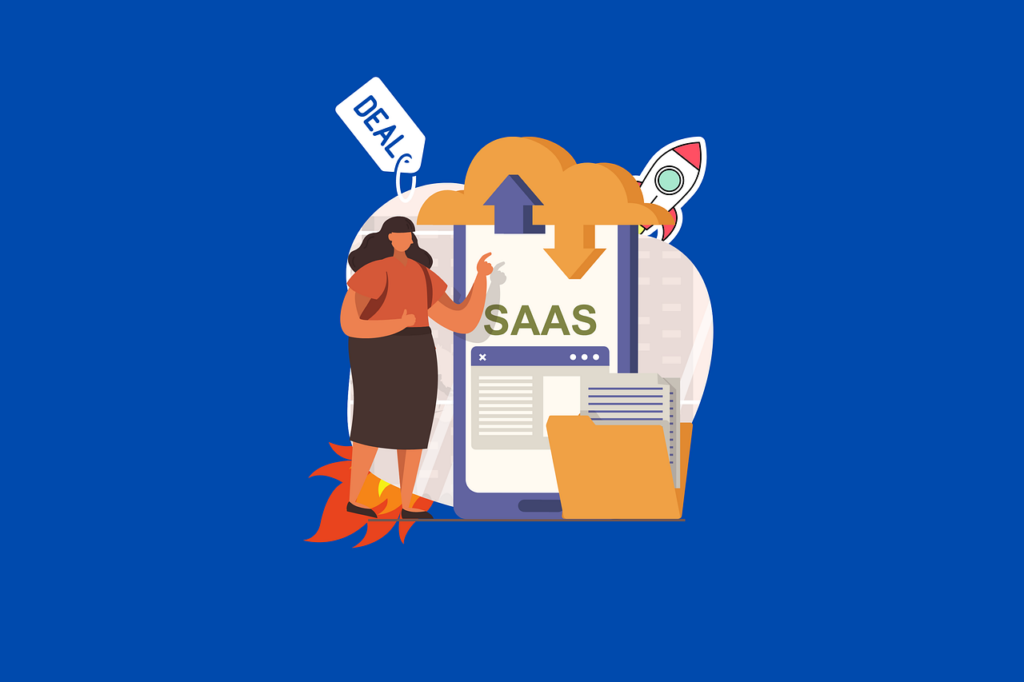The Growing Importance of SaaS Security
4 min read
As the digital landscape continues to evolve, Software as a Service (SaaS) has become an integral part of modern business operations. However, with the increasing adoption of SaaS applications, the importance of SaaS security has surged. This article explores why SaaS security is becoming critically important, what SaaS is, and the methods employed to protect SaaS applications.
What is SaaS?
Software as a Service (SaaS) is a software distribution model where applications are hosted by a third-party provider and made available to customers over the internet. SaaS eliminates the need for organizations to install and run applications on their own computers or in their own data centers, reducing costs and complexity. Popular examples of SaaS applications include Google Workspace, Microsoft 365, Salesforce, and Slack.
Why SaaS Security is Critically Important
1. Increasing Adoption and Dependence
The adoption of SaaS applications has been accelerating across various industries due to their scalability, flexibility, and cost-effectiveness. As businesses increasingly rely on SaaS for critical operations, the security of these applications becomes paramount. A breach in a SaaS application can have far-reaching consequences, impacting business continuity, data integrity, and customer trust.
2. Data Sensitivity and Privacy
SaaS applications often handle sensitive and personal data, including financial information, personal identification details, and proprietary business data. Protecting this data from unauthorized access and breaches is essential to comply with regulations such as GDPR, CCPA, and HIPAA. Failure to secure SaaS applications can lead to severe legal and financial repercussions.
3. Complex Threat Landscape
The threat landscape is continuously evolving, with cybercriminals employing more sophisticated techniques to target SaaS applications. From phishing attacks and ransomware to zero-day vulnerabilities and insider threats, SaaS providers and users must be vigilant against a wide array of security challenges.
4. Shared Responsibility Model
In the SaaS model, security responsibilities are shared between the service provider and the customer. While SaaS providers are responsible for securing the infrastructure and application, customers are responsible for securing their data and managing user access. Understanding and effectively managing this shared responsibility is crucial for ensuring comprehensive security.
Methods to Protect SaaS Applications
1. Strong Access Controls
Implementing robust access controls is fundamental to securing SaaS applications. This includes:
- Multi-Factor Authentication (MFA): Requiring multiple forms of verification to access the application, reducing the risk of unauthorized access.
- Role-Based Access Control (RBAC): Assigning permissions based on user roles to ensure users have access only to the data and functions necessary for their job.
- Single Sign-On (SSO): Allowing users to log in once and gain access to multiple applications, simplifying access management and improving security.
2. Data Encryption
Data encryption is crucial for protecting sensitive information in transit and at rest. SaaS providers should implement:
- Transport Layer Security (TLS): Encrypting data transmitted between the user and the application to prevent interception and eavesdropping.
- End-to-End Encryption (E2EE): Ensuring that data remains encrypted throughout its journey, from the sender to the recipient.
3. Continuous Monitoring and Threat Detection
Continuous monitoring and advanced threat detection are essential for identifying and mitigating security incidents in real-time. Key practices include:
- Security Information and Event Management (SIEM): Collecting and analyzing security data from various sources to detect and respond to threats.
- User and Entity Behavior Analytics (UEBA): Using machine learning to detect anomalies in user behavior that may indicate a security threat.
4. Regular Security Audits and Compliance Checks
Conducting regular security audits and compliance checks helps ensure that SaaS applications meet security standards and regulatory requirements. This includes:
- Vulnerability Assessments: Identifying and addressing security weaknesses in the application.
- Penetration Testing: Simulating cyberattacks to evaluate the effectiveness of security measures.
5. Data Loss Prevention (DLP)
Implementing DLP solutions helps protect sensitive data from being lost, misused, or accessed by unauthorized users. DLP tools monitor and control data transfers to prevent data breaches and leaks.
6. Incident Response and Recovery Plans
Having a robust incident response and recovery plan is essential for minimizing the impact of security incidents. Key components include:
- Incident Response Team: A dedicated team responsible for managing and responding to security incidents.
- Business Continuity Plan: Ensuring that critical business functions can continue during and after a security incident.
- Disaster Recovery Plan: Procedures for restoring data and systems to normal operation after a security breach.
7. Security Awareness Training
Educating employees about security best practices is vital for preventing human errors that could lead to security breaches. Regular training programs should cover topics such as phishing awareness, password management, and safe data handling.
8. Vendor Management
Assessing and managing the security practices of SaaS providers is critical. Organizations should ensure that their SaaS vendors adhere to stringent security standards and have robust security measures in place.
Conclusion
As the reliance on SaaS applications continues to grow, so does the importance of SaaS security. Protecting these applications from a complex and evolving threat landscape requires a multi-faceted approach, involving strong access controls, data encryption, continuous monitoring, regular security audits, and comprehensive incident response plans. By understanding and effectively managing the shared responsibility model, businesses can ensure the security and integrity of their SaaS applications and the sensitive data they handle.
Stay informed with SecurityChris.com for the latest cybersecurity news and updates.



